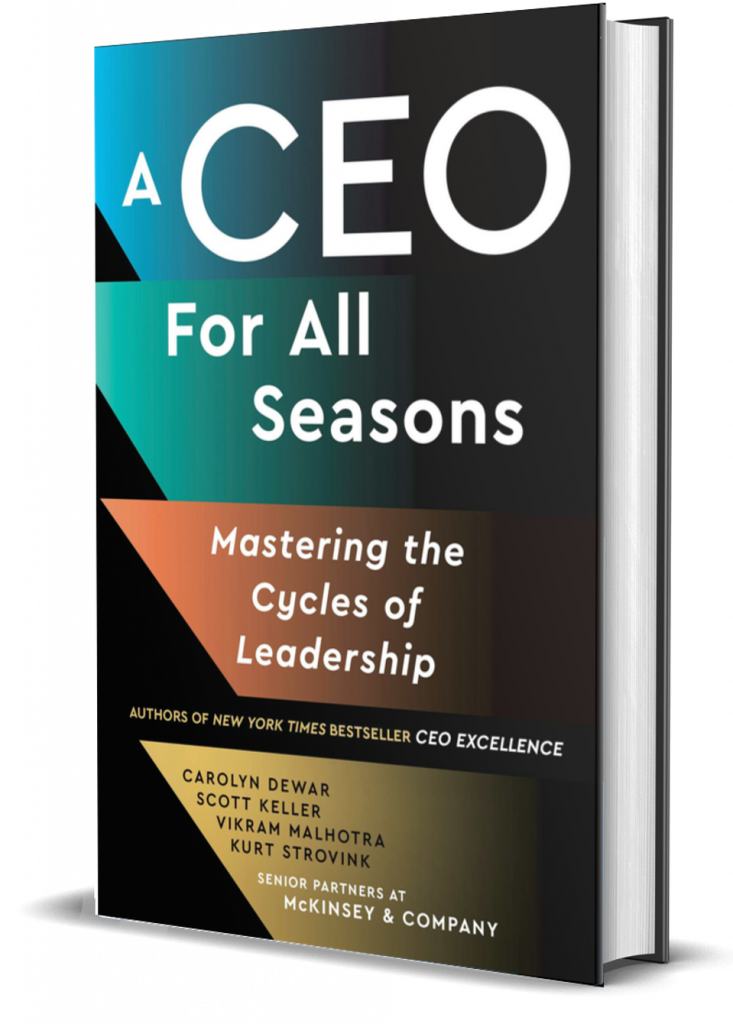In the high-stakes world of corporate leadership, the role of a CEO is unlike any other. From navigating boardrooms to steering organizations through economic turbulence, CEOs are expected to balance long-term vision with immediate results. Yet, despite the magnitude of the role, few receive the guidance needed to truly thrive.
Carolyn Dewar, co-author of A CEO for All Seasons, has spent decades working one-on-one with top executives, gaining invaluable insights into the complexities of leadership. In a recent interview, Dewar, a McKinsey senior partner, shared her perspective on how great CEOs evolve through distinct leadership seasons and why this understanding is crucial for success.
“Our research shows that 68% of CEOs didn’t feel prepared for the role, and 30% don’t make it past three years at all,” Dewar said. “Imagine if seven out of ten pilots got into the cockpit unprepared—we’d never get on the plane. Yet that’s the reality in the CEO seat. In a world where great leadership is more vital than ever, we wanted to democratize what the very best CEOs have learned: real, practical advice for each stage of the journey.”
The Four Seasons of Leadership
Dewar’s concept of leadership seasons parallels a CEO’s career with the natural cycles of the year. “What you need to focus on as a CEO, and what others expect of you, evolves,” she said. In the first season, aspiring CEOs should develop a clear vision. In the second season, new CEOs must make a strong first impression while setting the tone. The third season, the middle years, is often when complacency sets in. Finally, the fourth season, the handoff, is critical, with the stakes higher than ever.
Each season demands different strategies, Dewar emphasized, citing Allianz CEO Oliver Bäte’s remark: “You don’t really know what happens on the job until the day you have it.”
The Role of Self-Awareness
Self-awareness is key to avoiding the trap of leading in isolation. Dewar pointed out that CEOs often rate their performance higher than their direct reports, which can create a dangerous disconnect. Successful CEOs actively seek feedback, surrounding themselves with trusted advisors to remain open to learning and improvement. Doug Peterson, former CEO of S&P Global, summed it up well: “From day one, you need to have the mentality of always learning, growing, improving.”
Strategic Shifts Across Seasons
As CEOs progress, their priorities shift. In the early stages, leaders focus on setting the pace. By mid-career, the focus moves to sustaining momentum and addressing bigger challenges. “In the middle years, it’s about ‘big ball’ priorities: resource allocation, building new growth curves, and challenging the existing strategy,” Dewar explained. At the final stage, the handoff becomes crucial, and CEOs must ensure a smooth transition.
Lessons from Exemplary CEOs
Dewar said several CEOs have mastered multiple leadership seasons. Jamie Dimon at JPMorgan Chase, for example, has successfully navigated crises, growth phases, and cultural renewal for nearly two decades. Satya Nadella at Microsoft spearheaded a cultural reset and cloud pivot, continuing to innovate with AI. Dewar highlighted these leaders as models of strategic adaptability and long-term vision.
Balancing Immediate Results with Long-Term Vision
CEOs must balance short-term demands with long-term goals. Michael Wirth at Chevron exemplified this by making decisions that prioritized both financial performance and environmental responsibility. “That dual lens kept him focused on today and tomorrow,” Dewar noted.
The Final Act: Leadership Transitions
As a CEO nears retirement, the focus should be on a selfless, strategic exit. “Exiting well is an act of stewardship,” Dewar observed. “It’s not the encore, it’s the legacy.” Successful transitions require clear succession planning, transparency, and a focus on the future. Ken Frazier, former CEO of Merck, emphasized the importance of serving employees and patients, not oneself. This mindset should guide the final stage of leadership.
Conclusion: A Legacy of Adaptation
Leadership is a journey of adaptation. The most successful CEOs remain humble and continually ask, “What does my organization need from me right now?” As Dewar explained, “Seasons change, and the answer changes with them.” By embracing this cyclical approach to leadership, executives can leave a lasting legacy.

